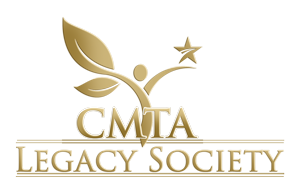Charcot-Marie-Tooth disease (CMT) is an inheritable peripheral neuropathy. CMT is caused by any one of many different genetic mutations that can be passed onto one’s children. Peripheral neuropathy is any disease of the peripheral nervous system. Because CMT is caused by genetic mutations that disrupt the peripheral nerves’ normal function, CMT is an inheritable peripheral neuropathy.
Muscular Dystrophy (MD) is a disease of skeletal muscle. There are many different types/forms of MD. CMT and MD can share many symptoms, such as muscle weakness and muscle wasting. CMT is often confused as a form of MD because of these similarities and because the Muscular Dystrophy Association (MDA), a patient advocacy group that focuses on Muscular Dystrophy, provides research funding and patient care services for CMT as part of its portfolio of many non-MD diseases, but this is where any similarities between the two diseases ends.
Is CMT a Form of MD?
No, CMT is not a form of MD. Although CMT shares many symptoms with the many forms of MD, CMT is a disease of the peripheral nerves and MD is a disease of the muscles themselves. CMT can affect the nerves that control the muscles (the motor nerves), the nerves that send sensation (touch, temperature, pain signals) back to the brain (sensory nerves), and often, CMT affects both.
The affects CMT can have on the motor nerves leads to the muscles becoming weakened and this then leads to a loss of muscle mass as a consequence. The medical term for this is “wasting.” The medical term for this wasting in CMT is “atrophy.” But, in MD, the term is “dystrophy.” Atrophy and dystrophy both refer to tissue wasting but both words have distinct meanings and uses.
What is Dystrophy?
Dystrophy is a type of tissue wasting that occurs because the tissue that is wasting is diseased. Dystrophy can occur in any tissue. When a disease in muscle tissue causes wasting, it’s called muscular dystrophy. When a disease in the brain’s white matter regions cause white matter to lose mass (waste), it’s called leukodystrophy (loo-ko-dis-trophy). Osteodystrophy refers to the loss of normal bone tissue due to bone abnormalities. Atrophy, however, describes something that’s a little different.
What is Atrophy?
Atrophy is a type of tissue wasting that occurs as a result of a disease process that is outside of the tissue that is wasting. This might seem a little confusing, but if we use CMT as an example, it gets easier.
In CMT, muscle tissue wastes because the nerves that control (innervate) the muscle are diseased. As a consequence of the diseased malfunctioning nerves, the muscles don’t receive adequate signals from the brain. When this happens, over time, the muscle tissue wastes (loses mass). Because the muscles themselves are not diseased, the wasting is the result of something happening outside of the muscles, and this is what atrophy is.
In CMT, the muscle wasting is atrophy because malfunctioning nerves are not part of the muscle tissue that is wasting. CMT causes atrophy but not dystrophy. Therefore, by definition, CMT is not a muscular dystrophy. Instead, CMT causes muscular atrophy. There are three types of atrophy: pathologic, physiologic, and neurogenic. CMT causes neurogenic atrophy.
CMT can sometimes cause optic nerve atrophy. If CMT is a peripheral nerve disease and the peripheral nerves are the nerves that lie outside of the brain and spinal cord, why is it “atrophy” when the optic nerve tissue is affected and wasting in CMT and not “dystrophy?”
What is Optic Nerve Atrophy?
Optic nerve atrophy happens when optic nerve tissue wastes (loses mass) because of a disease in tissues outside of the optic nerve. The optic nerves are the nerves that connect the eyes to the brain. The optic nerves are part of the central nervous system rather than the peripheral nervous system. For this reason, when the optic nerves are experiencing wasting in CMT, the wasting is termed “atrophy.” Atrophy is used because the optic nerves are part of the central nervous system and CMT is a disease of the peripheral nervous system; and therefore, optic nerve “atrophy” as opposed to optic nerve “dystrophy.”
Conclusion
CMT shares symptoms with many other diseases. Some of these diseases, such as MD, are diseases of the muscle themselves. Although CMT may share symptoms with these other diseases, such as muscle wasting, CMT is not a form or type of these other diseases. Much in the same way, these other diseases are not a form or type of CMT.
CMT often affects skeletal muscle by causing muscles to become weakened. Weakened muscles can then atrophy. While CMT does cause muscle symptoms, CMT is a disease of the nerves that control the muscles (and other tissues and systems) and not a disease of the muscles. Therefore, CMT is a peripheral neuropathy and not a form or type of MD.
Published: July 18, 2023





